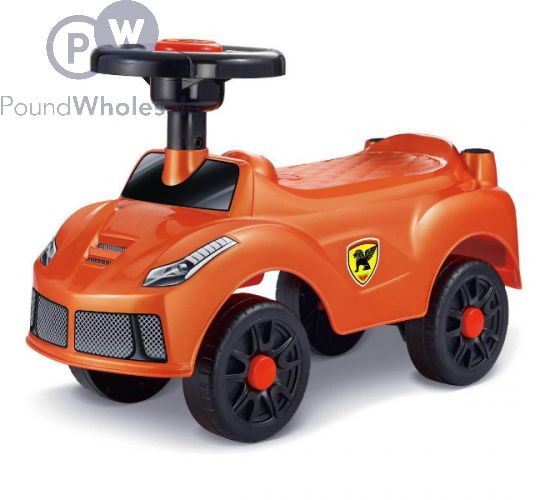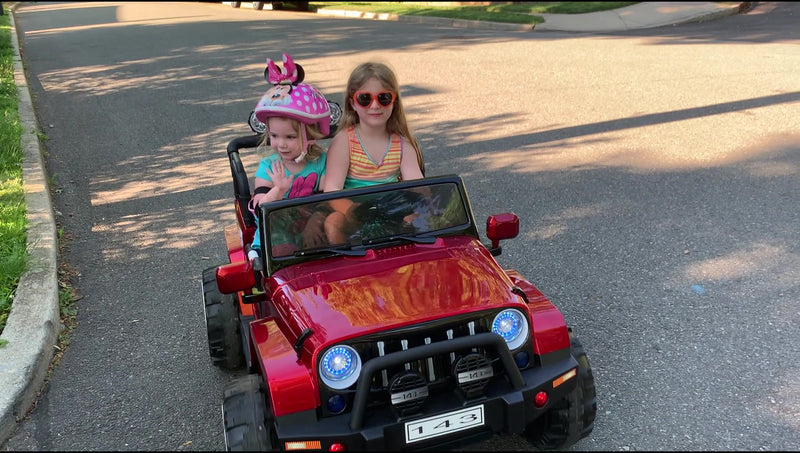Free Info For Selecting Remote Control Childrens Cars
Free Info For Selecting Remote Control Childrens Cars
Blog Article
What Are The Advantages Of Remote-Controlled Cars Over Electric Ones?
The features and benefits offered by electric and remote controlled vehicles for kids differ, and they meet the needs of different children and tastes. Here are the benefits of remote-controlled and electric kids' cars.
Independence - Electric kids' vehicles allow kids to drive independently, giving them a sense of control and independence when they travel around the neighborhood.
Motor Skill Development. Operating in an electric car requires children to learn motor skills such as the ability to steer, accelerate or braking. This improves coordination as well as spatial awareness.
Realistic Experience: Electric kids' vehicles often feature realistic designs. This includes functioning headlights as well as horns and engine sounds. These features make for an enjoyable and engaging experience for children.
Outdoor Play- Electric children cars are designed to be used outdoors on surfaces that are paved like playgrounds as well as driveways or sidewalks. Kids can play and play in the fresh air.
Physical Activity: Operating an electrical car requires physical exercise as the child uses their hands or feet to operate controls. This encourages movement and promotes exercise.
Children's remote-controlled cars: Benefits and advantages
Parental Supervision Remotely controlled kids' cars let parents supervise and assist their child's play by providing an extra protection and control.
Guided Learning - Parents can utilize the remote control to instruct their child and teach them how to safely operate the vehicle. They can eventually move to autonomous driving as the child develops in confidence and mastery.
It's versatile. It can be operated by a child on their own or remotely by the parents, allowing flexibility and adaptability to different skill levels.
Safety – Parents can use the remote control to control the direction or stop of the car and avoid dangers or obstacles. This can increase the safety of children while playing.
Remote-controlled children's cars are a source of enjoyment for both parents and kids, as they can play and interact with the car, while also learning about it.
The decision between remote-controlled and electric cars for children is ultimately based on factors such as age, parental supervision, child's skill level and preference. Electric vehicles provide authentic playing experiences as well as independence. Remote-controlled vehicles offer safety and direction as well as engaging play for both children and parents. Take a look at the top kids cars for more advice including childrens ride on, electric rideons, ride electric car, toy cars toy car, toy toy cars, lambo toy car, toy a car, lambo toy car, childrens electric cars, childrens digger and more. . 
What Kind Of Assembly And Maintenance Requirements Are There For Kid's Ride-On Vehicles?
Making and maintaining toys for ride-ons for children is crucial for their safety, quality and longevity. Here are the most common maintenance and assembly specifications for ride-on cars for children. - - Assembly -
The majority of ride-on vehicles arrive in an unassembled state and require assembling upon arrival. It usually involves attaching components such as the seats and steering wheel in accordance with the manufacturer's specifications.
Follow the steps to assembly in order to make sure that all parts are properly attached and aligned. To complete the assembly, use the tools and equipment provided.
Cleaning
To ensure that your car is in good condition and functioning effectively, it's essential to keep it clean. Make use of an incredibly soft and dampened sponge or cloth with mild soap and warm water for cleaning exterior surfaces.
Pay special attention to places that are prone to accumulation like the wheels, tires, and undercarriage. Use a toothbrush or a brush to get rid of grime from difficult-to-access areas.
Avoid using harsh chemical cleaners, abrasive chemicals, or high-pressure water spritzers, as these may harm the paint or electronic components of the ride-on automobile.
Battery Care
It is essential to maintain the battery in case your ride-on vehicle is powered by a battery that is able to be recharged. This will help you maintain the performance of your battery and extend its battery life. Battery care is easy if you follow these guidelines.
Fully charge the battery before and after each use to maximize runtime.
Avoid overcharging your battery or leaving it hooked up to a charger for a long time. Both could damage the battery and shorten its lifespan.
When not in use make sure to keep the car's battery and ride-on vehicles in a place which is cool and dry and far from extreme temperatures or direct sunlight.
The battery terminals should be checked regularly to check for corrosion and damage. They can also be cleaned using a wire bristle or terminal cleaner if required.
If the battery is no longer charging or displays signs of damage, replace it.
Tire Maintenance -
Be sure to check the tires on a regular basis for signs of damage, wear or loss of air pressure. If necessary, you can use a bicycle air pump or an air compressor to inflate tires to the appropriate pressure.
The tread pattern must be inspected for foreign objects, debris or other obstructions which can cause flats. Replace or repair damaged tires by taking out any obstructions.
Lubricate the wheel and axle bearings frequently to ensure smooth rotation and reduce friction.
Replace or repair parts when needed
Even with regular maintenance, it's still possible that ride-on vehicles will need to be fixed or replaced with parts due to wear and tear or accidents.
Watch out for indicators of deterioration or malfunction like unusual sounds, loss of power, or unusual behavior. Refer to the manufacturer's guidelines or contact Customer Support for help troubleshooting.
Replace damaged or worn-out components as soon as possible to prevent further damage and ensure safety and the functionality of the vehicle that rides on.
By following these assembly and maintenance guidelines, you can keep your kid's ride-on car in top condition and enjoy hours of safe and enjoyable playtime for your child. See the best discover more for Mercedes kids car for website examples including digger ride, childrens electric cars, ride a toy, car on ride, ride on digger, two seater childrens electric cars, toy a car, toy a car, pedal car, electric toy car and more. . 
What Is The Best Remote Control Car For Kids? What Are The Pros And Cons Of These Cars?
Remote control cars for children, also called RC or remote-controlled cars, come in a wide range of sizes, styles and costs. They are designed to accommodate the needs of different budgets and tastes. This article provides an overview of the different types sizes, styles and prices of children's remote controlled cars, along with their pros and cons.
Electric RC Cars – Remote-controlled cars powered by batteries that are suitable for use indoors and outdoors. There are many different styles of RC cars like trucks, buggies and sportscars.
Nitro RC Cars - Gas-powered remote-controlled cars that have more speed and performance, but require more care and experience to operate. Electric RC cars are smaller and are less costly.
Scale Models: Remote-controlled replicas of real-life vehicles, such as cars planes, trucks, and boats. Model sizes vary from 1-10 to 1--24. Larger models have more details and greater real-world realism.
Sizes -
Remote-controlled cars for children come in various dimensions. They range from tiny micro-sized copies to large-scale copies. The size of the car has an impact on its performance, speed and handling capabilities.
Micro-sized cars are small and compact. They're ideal for young children and indoor use. The larger-sized cars are more robust and durable, which makes them perfect for off-road racing as well as outdoor racing.
Prices
Prices differ based on the size, features brand and the build quality.
The cost of small-sized electric RC vehicles range from $20 to $100. However, larger-scale electric or nitro RC models can range between $100-$500.
Scale models, premium hobby RCs may cost from several hundred bucks to over a $1,000 depending on the detail level and performance.
Pros and Cons -
Pros -
Remote Control Cars for Children - These cars are perfect to entertain your children. They can be utilized by adults as well as children.
Skills Development. Operating a RC car allows children to develop hand-eye-coordination as well as spatial awareness and problem-solving skills.
Social Interaction. You can take pleasure in the RC cars with your friends and family, which promotes social interaction.
Customization - A lot of RC vehicles can be customised by using aftermarket parts, upgrades, and accessories to enhance performance and appearance.
Cons
Costs - Remote controlled cars designed for children, particularly ones with top-of-the-line features and hobby-grade models, can be very expensive.
Learning Curve - Operating an RC vehicle requires practice and skill. Children who are younger may find it difficult to control the controls.
Maintenance - RC cars require regular maintenance, which includes cleaning, lubrication, and periodic repairs or replacement of parts.
Safety Risks RC vehicles can present security risks, such as crashes, falls and electrical hazards, if not used responsibly and under adult supervision.
Remote-controlled cars for kids are a great learning and entertaining experience. However, it's important to choose the right model based on factors like size, safety, price and features. Hobby-grade RC vehicles may be better suited to older children or enthusiasts. The simpler models are ideal for children who are just beginning their journey. Check out the top rated kids cars kidscars.co.uk advice for website advice including race car toy, car on ride, car on ride, lambo toy car, childrens electric ride on, electric ride on, toy car, childrens ride on, kiddies cars, toy a car and more. .